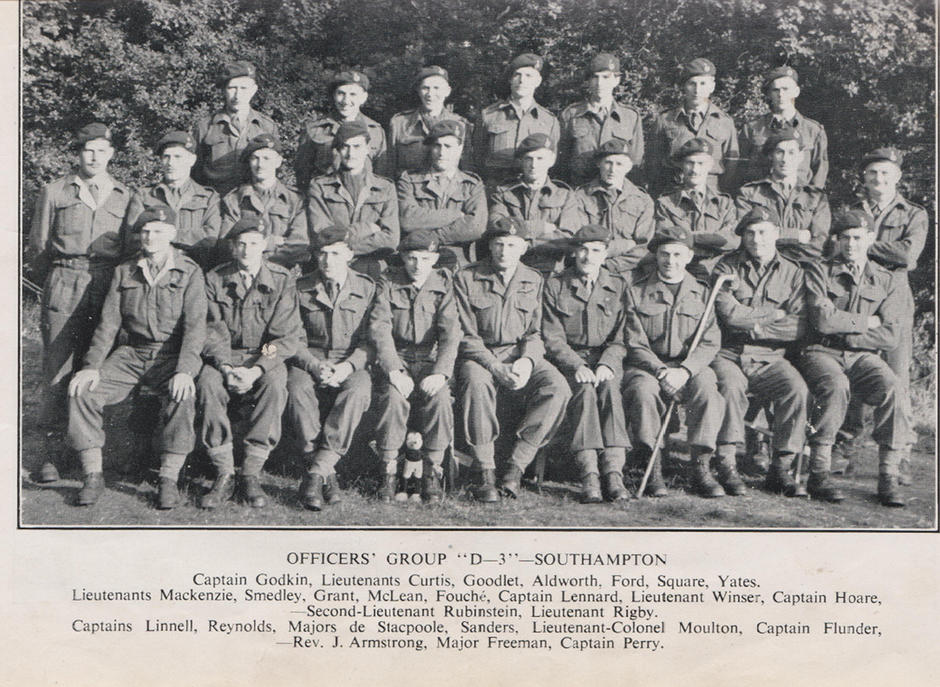48RM Commando
Primary tabs

This was the last WW2 Commando unit to be raised. The planning for Normandy required one additional Commando unit and it was decided to use the 7th Battalion, Royal Marines, for this purpose, with any shortfall in numbers to be filled by Marines serving in 2nd Mobile Naval Base Defence Organisation (MNBDO II), Royal Marines. Both these units returned from overseas deployments and disembarked in the Clyde on 10 February 1944.
The 7th Battalion Royal Marines had been overseas since September 1942 and was already experienced in combined operations. During the preparations for the invasion of Sicily, it was at, and helped to run, the Combined Training Centre at Kabrit. After April 1943 it became the Battalion of 31 Beach Group also known as 31 Brick and landed with the first wave at 0400hrs on 10 July 1943. It left the Brick on 13 July 1943. Fighting through the Sicilian Campaign as infantry, notably in the mountainous country and in the Catanian plain around Gerbini, the Battalion was later used in the local protection around the Naval base at Taranto. The battalion was helping in the evacuation and reception of Yugoslav refugees and with the organisation of Yugoslavian partisans when recalled to the UK in January 1944.
48 Royal Marine Commando, Royal Marines, was raised at Deal between the 2nd and 13th March 1944 under the command of Lt Col James Louis Moulton, RM. On the 13th March 1944 the Commando moved by special train to the Commando Basic Training Centre at Achnacarry. The journey took 25 hours and, once there, they were joined by a draft from MNBDO II to take part in a course, shortened due to time constraints, of commando training. After their course concluded on the 3rd April 1944 those who had passed moved to billets in Gravesend for further training at Sheerness Ranges and Cliffe-Cooling Marsh Ranges.
In May 1944 they moved to C19 Marshalling Camp located on the road into Southampton. The Camp was sealed on 25 May 1944 with no one allowed to access or leave without authorised passes which were only issued to senior commanders. By 2 June 1944 all the troops had been briefed and necessary code words issued. The men wrote letters, played football or handball to keep fit and attended concerts which were arranged by Padre, Rev. J. Armstrong OBE, RN, Senior Chaplain Special Service Group. The Padre had elected to accompany this, the newest Commando, into action.
On 5 June 1944 they moved to Warsash and at 1400hrs embarked in the Craft. At 1500hrs the Flotilla sailed and lay off in the Solent. At 2100hrs the Force sailed. The Channel was choppy and the LCIs rolled badly. There was a cold wind and rain. Many suffered from sea sickness.
On 6 June 1944 48RM Commando landed on Nan Red Sector of Juno Beach, alongside the Canadians. Commando casualties were very high and included most of the fighting troop commanders. They continued with the offensive taking the enemy strongpoint at Langrune. Approximately 70 per cent of all their casualties occurred on the beach or in Landing Craft. After being reinforced a few days later, the Commando participated in the fighting during the allied advance inland, and continued in this role until mid September.
It was at this time that they began training for the landings to take place at Walcheren. Having left Ostend on the 31st October 1944, 48RM Commando, as part of 4 Special Service Brigade, assaulted the beaches at Westkapelle with No.41RM Commando the following day. Their role was to destroy gun batteries and enemy coastal defences. The Commando would continue in operations in The Netherlands over the next few months.
In March 1945 with the promotion of Lt Col Moulton to Brigadier i/c 4 Special Service Brigade, Lt Col Martin Price took command of No.48 RM Commando.
After the surrender of Germany in May, the Commando was moved to Minden in Germany in a policing and security role that would take them to different locations around North Germany.
Having returned to the UK in November, No. 48 Royal Marine Commando RM, was disbanded the following year at Beeding, near Horsham, on 31 January 1946.
D Day Commando - From Normandy to the Maas with 48RM Commando by Ken Ford.
View our Gallery images of 48RM Commando
Click/touch 48RM Commando below for additional content, or follow the links below it to specific content entries.
Ask Questions / Add Information / Add Photos
Read some frequently asked questions here [FAQ's].


